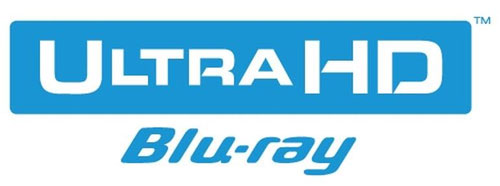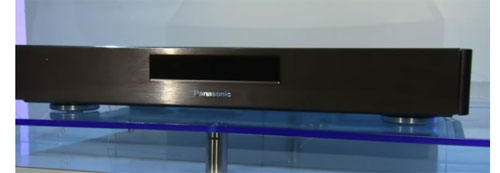The BDA (Blu-ray Disc Association) has reached a landmark in the ongoing evolution of the Blu-ray Disc format: the specification, detailing the ins and outs of the Ultra HD format extension, has been finalised, complete with a new logo and “Digital Bridge” feature.

We originally described the new format when reporting from CES 2015, and today’s press release solidifies what we already knew: Ultra HD Blu-ray (UHD BD) will operate from discs ranging from 66GB or 100GB discs, utilizing either a dual-layer or triple-layer configuration. Utilizing the HEVC (h.265) standard, this will certainly be enough storage capacity to deliver high quality ultra high-definition (UHD) video with mild compression.
Note that an entirely unrelated 300-1000GB optical disc format for archival purposes was developed by Sony and Panasonic, and many sources misreported this as being a successor to Blu-ray, no doubt creating much confusion in the process. Although we wouldn’t say no to having that level of storage in a consumer format, we would almost certainly say no to the associated price tag, as would the mass market – this level of storage capacity would be overkill for consumer use.
By our calculations, a 110-minute film will happily sit on one of the new Ultra HD Blu-ray 100gb discs with a massive average bitrate of 90mbps – and still leave room for lossless audio and bonus content. (The current 1080p HD Blu-ray standard tops out at 40mbps, and can produce excellent results with high quality AVC/h.264 encoding with an average of 20mbps).
Staying relevant to recent industry trends pushed by CE manufacturers, who have seemingly realized that higher “4K” resolution is not enough to make UHD compelling, the new Ultra HD Blu-ray standard adds more features than just UHD resolution. In a nutshell, here’s what you can expect from the new standard:
The last feature on this list will be news to most, since Digital Bridge has been under wraps until today’s announcement. This feature could be described as “ripping gone legit”, the idea being that users will be able to purchase a Ultra HD Blu-ray Disc and make legal copies of the content onto portable devices – from the disc itself. Currently, studios have had success by bundling a separate “Digital Copy” DVD-ROM disc as a pack-in with flagship Blu-ray titles, but the introduction of Digital Bridge offers a more elegant solution.
How this will be facilitated, we’re not yet sure (the BDA were not available for comment at the time of going live). Perhaps the idea is that users will be able to hook their tablet, smartphone or laptop up to their UHD BD player, and the player will transcode the content onto the target device. We’re wondering how much adding encoding (rather than just decoding) features to players would up the price, but it seems like the only way of getting the job done that we can think of – doing the same via a computer would need a new UHD BD-ROM drive.
While it sounds like a good idea for those consumers who want to enjoy movies on a very small screen, it remains to be seen how well manufacturers, and most importantly of all, content owners, will treat this feature and its users: it’s the sort of feature that could have its usefulness squashed by Hollywood digital rights paranoia. Here’s hoping that studios won’t find ways to make it too annoying or limiting.

Naturally, the new Ultra HD Blu-ray players (such as the prototype Panasonic unveiled at CES 2015) will be fully backwards compatible with regular 1080p Blu-ray Discs (anything else would be outright suicidal, in our view). Of course, UHD discs will not play in existing Blu-ray players.
The BDA’s news release also mentions that next-generation object-based sound formats (namely Dolby Atmos and DTS:X) will be delivered by the new standard, which is unsurprising given that the first Atmos-enabled discs on the current Blu-ray system have been trickling onto the market.
“For years, Blu-ray Disc™ has set the standard for high definition picture and audio quality in the home. Ultra HD Blu-ray will do the same for UHD home entertainment,” said Victor Matsuda, chair, BDA Promotions Committee. “The technical capabilities of Blu-ray Disc, in particular its significant storage capacity and high data transfer rates, will enable the delivery of an unparalleled, consistent and repeatable UHD experience.”
In closing, it’s not hard to see what Matsuda is hinting at in his last sentence. As compelling as the convenience brought by network delivery of content via services like Netflix 4K and Amazon Prime Instant Video can be, “unparalleled, consistent and repeatable” are three strengths better associated with physical media. While the content delivery landscape is diversifying with more ways than ever to watch content, physical media is still a bankable earner for studios.
We’re glad to see that the entire Ultra HD Blu-ray picture is pulling together. Last month at the National Association of Broadcasters (NAB) in Las Vegas, Scenarist LLC announced that they are far along in development of a new UHD-capable version of the Scenarist authoring software, which is currently used to create 1080p Blu-ray Disc movies. Deluxe Digital Services and Japanese post facility Q-TEC are among some of the big names set to produce UHD Blu-ray Discs using the software.
Of course, consumers will only have two questions: when, and how much? And for concrete answers to those questions, we’ll have to wait a little longer – although manufacturers and studios will almost certainly be working around the clock to capitalize on the 2015 Holiday shopping season.
Source: BDA press release